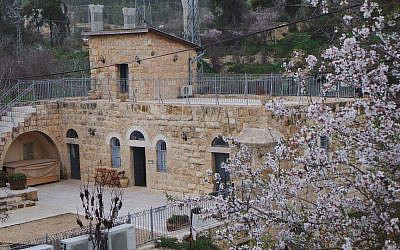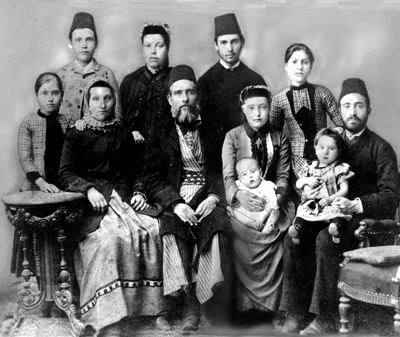אין מוצרים בסל הקניות.
THE BLOGS - Tania Shalom Michaelian
Breaking the walls of tradition in Motza
פורסם: 13.3.2023
Nearly two centuries ago, Sephardic Ashkenazi families united to build a life for Jews outside the Old City walls

Yellin House. Photo source: Yellin House Facebook page https://www.facebook.com/BeitYelin,Beit Yellin
All the traditions of the wedding and the chuppah were traditions of the Sepharadim…. When I got to my in-laws’ home, I found a new world of strange, new clothes and food. In place of the white yarmulka, I found a red fez … In place of the local jargon, there was Arabic. In place of chairs and table, there were carpets on the floor and cross-legged sitting
These were the impressions* of 13-year-old Yehoshua Yellin, who came to join the household of his child-bride, 12-year-old Sarah Yehuda within the walls of Jerusalem’s Old City after their marriage in the 1850s
The age of the young couple was unusual, even for a marriage that took place in the confines of tradition nearly two centuries ago. But what was even more unusual was the fact that Yehoshua was the son of immigrants from Poland, while the young bride was from a family headed by a revered rabbi from Iraq. To say that unions between Sephardi and Ashkenazi Jews were almost unheard of in those years, would be an understatement

Family of Yehoshua and Sarah Yellin, Photo source: Yellin House at Motza Visitors Center
But the Yellin and Yehuda families were groundbreaking pioneers in more ways than one. The marriage of their children saw them enter into a new type of partnership and helped them further their dream of settling the land of Israel outside the walls of the Old City. The families jointly purchased a parcel of land from the Arab residents of Colonia in an area they called Motza, named for the Biblical city mentioned in the Book of Joshua
Despite several setbacks, including the untimely death of Sarah’s brother, Shaul, who had hoped to settle the land with the young couple, Yehoshua didn’t give up on the dream. Through trial and error, he managed to grow olives, fruit, and vegetables, and acquire more land around the original parcel
In 1890, he built a home for his family – what is known today as Yellin House. The house was built behind a roadside inn (khan) constructed by Yellin some 20 years earlier, and which was later turned into a synagogue for the new pioneers who eventually joined the fledgling settlement over time. A huge water cistern from the Crusader period was discovered next to Yellin House
While Motza grew into one of the most beautiful and sought-after neighborhoods in the Jerusalem area, the original Yellin family home fell into ruin over time. In the 1990s, one of the grandsons of Yehoshua Yellin’s own grandsons, Eliezer Yisraeli, decided to preserve the family home. With the help of the Society for Preservation of Israel Heritage Sites (SPIHS), and its partners such as JNF-USA, the home’s interior and exterior were restored to their former glory. The site is managed by SPIHS
Yellin House serves as a visitors center that tells the story of the pioneering efforts in Motza. Its great location, only minutes out of the center of the capital, and close to natural attractions such as the Halilim Stream and the Einot Telem National Park, make Yellin House an attractive excursion for individuals and families. The hugely popular on-site coffee shop, Alloro Café coffee welcomes hundreds of customers each week
Yellin House not only symbolizes the beginning of agricultural settlement in the Land of Israel, but also a very unusual marriage contract between two families from such different cultures and backgrounds, who came together for their dream of settling the land
*From the book Memories of a Son of Jerusalem by Yehoshua Yellin
More information about Yellin House can be found at Society for Preservation of Israel Heritage Sites
Some of these articles were originally published on the Times of Israel blogs
חדשות ועדכונים אחרונים
עוגיות
אתר זה משתמש בעוגיות כדי לשפר את הפונקציונליות של האתר, לספק לך חוויית גלישה טובה יותר ולאפשר לשותפים שלנו לפרסם לך.
מידע המפרט על השימוש בעוגיות באתר זה וכיצד ניתן לדחות אותם, ניתן לצפות במדיניות העוגיות שלנו.
על ידי שימוש באתר זה או לחיצה על "אני מסכים", אתה מסכים לשימוש בעוגיות.





